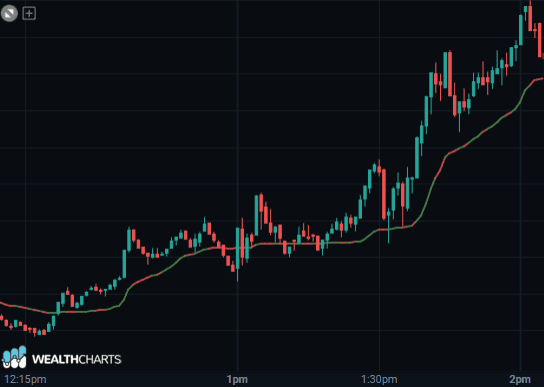Categories
About UsHow to get startedAccount AccessBrokers and TradingScannersResearch ToolsCommunityStocksOptionsFuturesAlertsAdaptive Moving Average (KAMA) - Indicator Formula
The Adaptive Moving Average was developed by Perry Kaufman. The Adaptive Moving Average is a technical indicator that is designed to become less sensitive to price movement when it is range-bound or volatile and more sensitive when the price is moving in one certain direction or trending.
When the Adaptive Moving Average Line is turned up and prices are moving above the line are seen as positive or could begin a bullish move.
When the Adaptive Moving Average Line is turned down and prices are moving below the line are seen as negative or could begin a bearish move.
Calculation:
AMA = AMA( 1 ) + alpha * ( Close - AMA( 1 ))
Where:
alpha = [(VI * ( FC - SC )) + SC]2
VI = Users defined measure of volatility or trend strength.
SC = 2 / SN + 1
FC = 2 / FN + 1
FN = Slow moving average < SN
